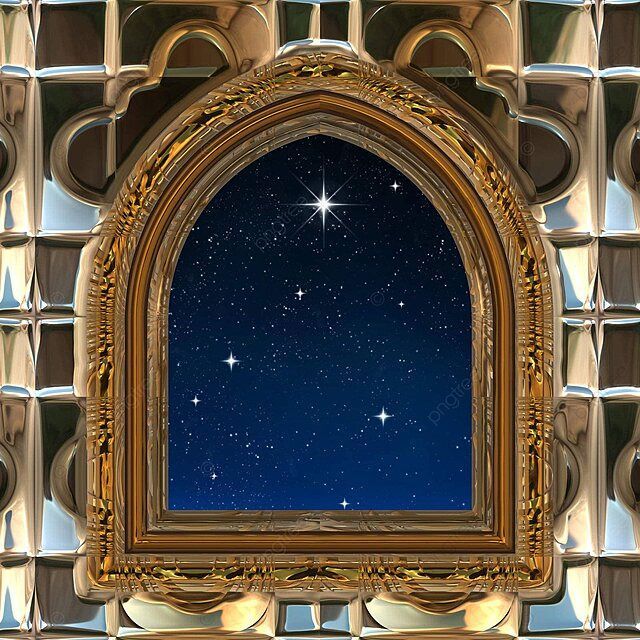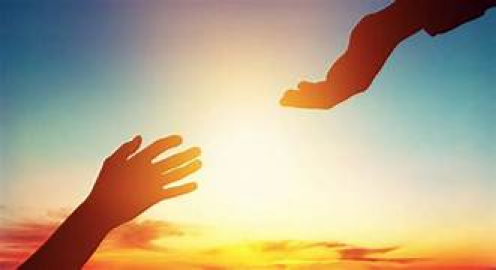Staff
Competency 3: Sustaining a Healthy Lifestyle
Posted by Dr. Tom Spudic on April 20, 2020
Chances are this newsletter came by email. It was one of many in the day, one more notification in a long string of notifications. There were likely other notifications: telephone calls, text messages, notes, fellow clergy or staff asking a question, calendar reminders, even reminders to take a break. When do the notifications end? When does the workday end?
On the tail-end of a pandemic and the demand it has placed on many professions and vocations, it may not be surprising that 76% of employed adults in the U.S are experiencing burnout symptoms (Spring Health, 2021). Data over the last year shows that the Covid-19 pandemic and political issues are the largest current contributors at 57% and 33%, respectively (Springhealth, 2021).
What exactly is burnout? Burnout takes the form of emotional, physical, and mental exhaustion that can be caused by excessive exposure to stress. Burnout is most noticeable through feelings of being overwhelmed, emotionally spent, and unable to meet constant demands. As the stress continues, interest and motivation in the chosen vocation begins to wane. As burnout increases, productivity begins to decrease as do energy levels, which may lead to feelings of helplessness, hopelessness, and resentfulness. Additionally, cynicism may find its way into daily interactions and the feeling that there is nothing more to give becomes more powerful.
The effect of burnout spills over into every area of life—including your home, work, and social life. Additionally, long-term changes to your body that make you vulnerable to illnesses like insomnia, colds, and flu can occur. Dealing with burnout is important in order to head off these negative possibilities.
Signs and symptoms of burnout
There may be mornings when dragging out of bed requires every bit of energy and prayer that can be mustered. Most people experience days when they feel overloaded, helpless, or underappreciated. When this feeling is pervasive, burnout may be on the horizon. The process of burnout is gradual and doesn’t happen overnight. The signs and symptoms are subtle at first, but become worse as time goes on. An easy way to remember this is like the check engine light on a vehicle. Sometimes the light appears because there is a problem, but one that can be easily fixed. Visiting a mechanic may be put off, the car seems to be running fine, and since there is not an obvious repair needed, it can wait. However, the longer it takes to get a repair, the worse the problem gets. Something that could have been easily fixed got worse over time as it wasn’t noticed. Paying attention and actively reducing stress, can prevent a major breakdown in life as well.

Recognizing burnout
The ability to recognize burnout is often difficult. Often, it appears as stress, but stress has an endpoint that can be seen; if everything can be accomplished there is light at the end of the tunnel. Burnout is the cause of unrelenting stress and involves feelings of not being enough. Motivation disappears, mental exhaustion creeps in, and there is a feeling of emptiness. Often, in these situations it may seem that there is no chance of positive change. Burnout can feel like we are all dried up and have nothing left to give.
Work related causes of burnout
- Feeling like you have little or no control over your work.
- Lack of recognition of reward for good work.
- Unclear or overly demanding job expectations.
- Doing work that’s monotonous or unchallenging.
Lifestyle causes of burnout
- Working too much, without enough time for socializing or relaxing.
- Lack of close, supportive relationships.
- Taking on too many responsibilities, without enough help from others.
- Not getting enough sleep. Personality traits can contribute to burnout
- Perfectionists tendencies; nothing is ever good enough.
- Pessimistic view of yourself and the world.
- The need to be in control; reluctance to delegate to others.
- High-achieving, Type A personality
Some are able to notice the signs of burnout and some push past the boundaries of exhaustion without ever realizing it. Regardless of one’s ability to notice burnout, if it is not addressed in healthy ways it can lead to further physical, emotional, and spiritual distress. How does one deal with burnout?
- Recognize: Watch for the warning signs of burnout.
- Reverse: Undo the damage by seeking support and managing stress.
- Resilience: Build your resilience to stress by taking care of your physical and emotional health.
Below we will explore ways to manage burnout.
A. Health and Wellness
The goal of exercise, in order to prevent burnout, is not to become a King David or Samson, but rather to allow our bodies moments of reprieve. Throughout history, mankind has been on the move, traveling from place to place, working the fields, as technology has made our lives easier it makes regular movement a little more difficult. There may not be a need to get up for hours as you pour over emails and write homilies. Regular exercise can have a positive effect reducing stress, anxiety and depression. A recent study by the Harvard T.H. Chan School of Public Health found that running for 15 minutes a day or walking for an hour reduces the risk of major depression by 26%.
Does the thought of carving out an hour of your day to walk cause more stress than the actual walk can alleviate? No worries, current recommendations are to include at least 30 minutes of exercise everyday. This can be done all at once, or broken up into shorter periods of time throughout the day. Rhythmic exercise (moving both arms and legs) is a natural way of boosting mood, increasing focus and energy. Often this time can be used as a time for prayer and contemplation, perhaps walking for as long as it takes to pray the rosary. Alternatively, listening to your favorite music or podcast might also make the time more enjoyable. Fresh air and time away from the demands of a busy schedule provide needed distraction to break out of the cycle of negative thoughts that feed depression and anxiety and provide a fresh outlook.
Research indicates that moderate levels of exercise are what most people need. Moderate exercise can be determined if breathing is a little heavier than normal, but not so out of breath that you cannot carry on a conversation, and that your body feels slightly warmer but not necessarily breaking into a sweat. There are always obstacles to exercising, if it were easy this newsletter would not need to be written. The most important part is to start small. Setting goals that are extravagant when feeling stressed or under the weather is a recipe for disaster. Do what you can when you can and be proud of the small achievements and build from there! Schedule your workouts when your energy levels are high, while waiting until the end of the day may be easier, it is often better to exercise when you know you will have the energy. Focus on doing exercises that you enjoy and remember to invite others to these activities with you.
Part of making exercise a priority involves letting go of thoughts related to work and allowing yourself to focus on your body as it moves. How does the ground feel under your feet? Can you feel the wind on your skin? How heavy is the weight in your hand? Being present in the moment and noticing these physical sensations is a large part of how exercise can help rejuvenate us. Exercise also has a positive effect on our immune systems. When exercise is combined with a healthy diet the improvements are often noticeable.
Most nutritionists will agree that the “calories in, calories out” approach is where everyone needs to be. This simple statement means that to maintain a healthy diet, we should be putting in the same amount, or less, in calories than we exert throughout the day. One way to do this is to minimize sugar and refined carbs; old Halloween candy or a medium fry may hit the spot, but it will lead to a crash later in the day. Attempt to reduce foods and liquids that can affect your mood, such as caffeine, overly processed foods, or those with large amounts of hormones. Coffee is great….in moderation (Sorry...had to.). Omega-3 fatty acids give your mood a boost; these include fatty fish (salmon, herring, mackerel, sardines), seaweed, and walnuts. Avoid nicotine; smoking may seem calming but nicotine is a stimulant and can increase anxiety and stress. Drink alcohol in moderation. Alcohol temporarily reduces worry, but too much can cause anxiety as it wears off.
Eating healthy doesn’t have to be difficult but it does require some planning out of your meals. Try taking some time in your day off to plan your meals for the week. What items do you need from the grocery store? Don’t try to complicate it. Sources such as Emeals, Blue Apron, Hello Fresh and other “subscription” boxes can be a good source of new recipes for both lunch and dinner. When grocery shopping, try to stay along the edges of the grocery store and away from the aisles (where the processed food is primarily located) as much as possible. Remember, if you have dietary issues, try meeting with a nutritionist. They can help guide you to foods that your body can more easily digest.
Small investments in both diet and exercise can be of benefit in reducing burnout and emotional stress. The payout of making incremental changes in these areas will show dividends within your vocation.
B. Simple ways to recharge
Just as making small investments in diet and exercise can produce big changes, the same goes for how we find ways to recharge in our daily lives. In addition to the physical strains that we may experience with burnout, there are emotional strains as well. In our last newsletter, we focused on the importance that fraternal connections have in helping maintain positive emotional health. In addition to reaching out to others, there are simple ways of dealing with the emotional turmoil that may arise from burnout. Journaling can be an excellent way of dealing with emotions. When we can put our thoughts and feelings down on paper, we give our minds more bandwidth to focus on tasks during the day. In addition, it is often helpful to focus on the emotions we are feeling, positive or negative, and learn how to accept them. Accepting emotions does not mean that we approve of them, it is simply an acknowledgement of how we are feeling. In addiction recovery there is a common phrase, “Let go and let God.” This phrase is a reminder that if thoughts and emotions can be let go of, there is less to worry about.
One of the most effective exercises to reduce stress that can be done anytime throughout the day is that of deep-breathing. First, when practicing this sit deeply into your chair. Closing your eyes take a deep breath and let it slowly go out. Breathe in through your nose and out through your mouth slowly. When inhaling, breathe in so deeply that your stomach will expand. We do this naturally when sleeping but most of us never bring the deeper/lower lobes of our lungs into our normal breathing unless we’re exercising. So again, breathe in deeply, perhaps count to five to make sure you take the time you need to fill your lungs more completely. Breathe in and then slowly out, making sure you exhale completely. Repeat this for about three or four times until you notice your body beginning to relax. At the same time and while keeping your eyes closed, think about your face, shoulders, arms, hands, legs, feet and muscles. Aiming to release the tension stored in those various places, relax as you imagine the tension flowing out of your body. With gentle awareness notice your shoulders. Are they high or low and drop them, allowing the world to roll off. Notice your back and your stomach, your upper and lower legs; wiggle your feet and ankles. Foster a calm awareness of which parts of your body have tense muscles and try to relax those muscles while continuing to breathe deeply and almost imagining the air of your deep breaths going into them and relaxing them. Sitting deeply in your chair you will feel heavy. Continue this until you feel like your whole body has finally relaxed. Initially it might take longer than three to five minutes, but as you do this greater frequency and regularity, you will learn to relax and will be able to do it more and more quickly.
C. Engage in things you are passionate about
For the context of this article, let us consider this non-theological notion of passions: people, places, interests, activities, and situations/circumstances that simultaneously (and paradoxically) energize us and deplete us in a healthy way. Our natural passions are a gift from God, as are our innate talents, out of which God means us to live the abundant life of joy and peace. Many of you became priests in response to a natural passion to lovingly serve our Lord and his people. You know well the reality of feeling energized during priestly work followed by the reality of feeling exhausted by and after an intensive measure of it.
How do we recognize our natural passions? When people are fully engaged or immersed in a natural passion, the following phenomena are commonplace: we lose track of time, we feel an enthusiasm, an alertness, a keen focus, a lack of distraction, a sense of being nourished or rejuvenated, even a ‘good’ anxiety which clinicians refer to eustress. We read an analogy of these phenomena in the Transfiguration story mainly through Peter’s ecstatic words.
As with our sensual appetites, it is wise (and therefore holy and virtuous) to moderate and balance our natural passions in order to sustain the kind of healthy lifestyle needed to vigorously serve our Lord and his people. It is commonly observed that any single over-weighted or over-utilized passion tends to result in one’s decreasing revitalization and increasing depletion over time. In the worst-case scenario, such a trend can lead to burn-out or collapse.
So make a habit of indulging your natural passions in a consistently balanced manner. You may find it useful to inventory or catalog them using the PIES model:
- Physical: Generally means some form of exercise or bodily exertion
- Intellectual: What do you love to learn about?
- Emotional : ‘Wasting’ quality time with great friends •
- Spiritual: Drawing closer to our Lord in relationship
These are the dimensions of our humanity and within them each of us can probably identify at least one natural passion. When we attend to nurturing all four of these aspects of personhood, we will sustain the healthy lifestyle needed for mission service.






